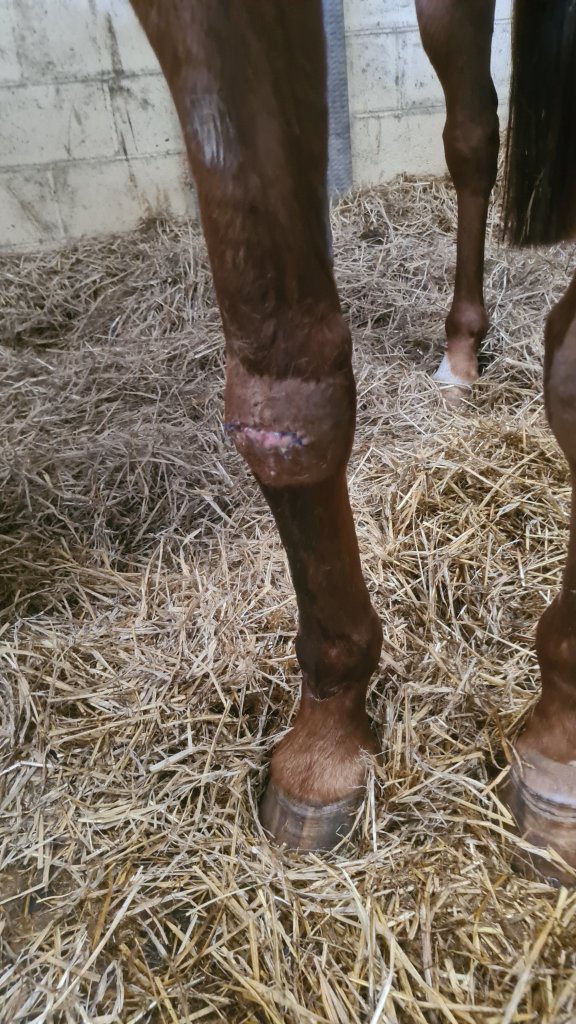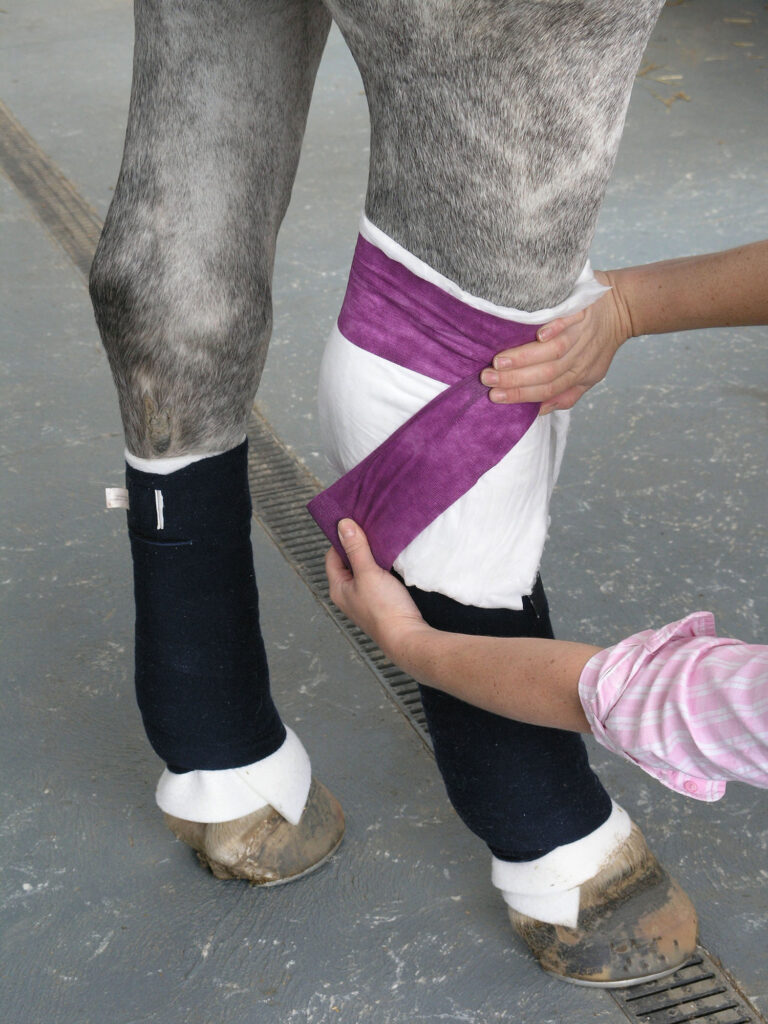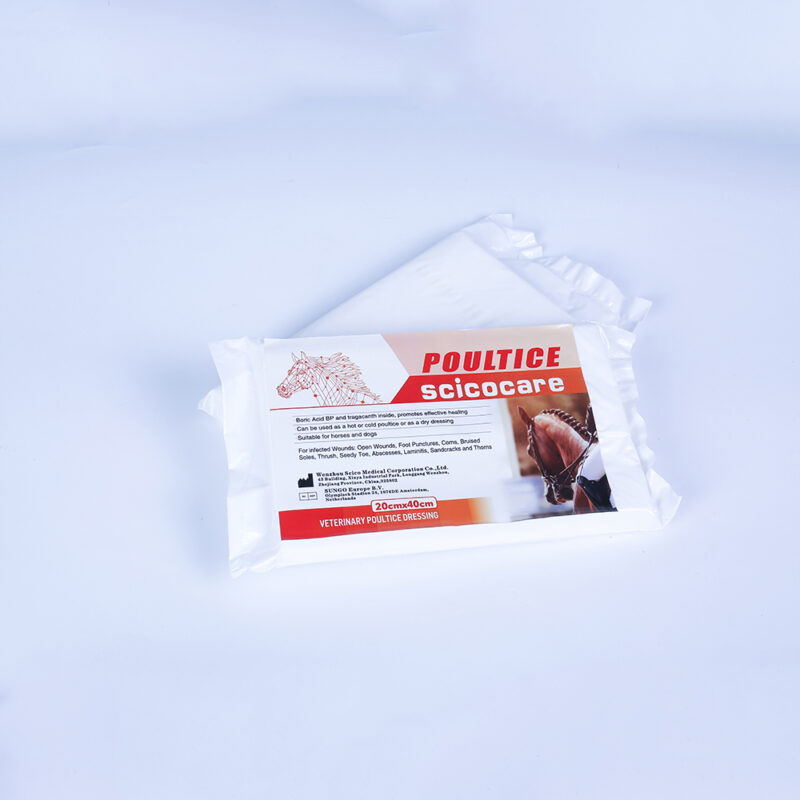Description
Minor and major wounds are common occurrences in horses and the severity of a wound can be deceiving. Large wounds accompanied by profuse bleeding often appear worse than they are, particularly if they involve only superficial structures.
In contrast, small wounds occurring on or near a joint or tendon might not initially present a dramatic flow of blood but could prove to be more serious due to the potential for underlying structures to become injured. Common types of wounds include partial skin thickness abrasions, full skin thickness lacerations and puncture wounds through the skin that leave a very small surface wound, but with the possibility of damage to deeper structures.

Wound management in horses can be challenging, time consuming and expensive. And wounds involving the distal limbs can be difficult to deal with as horses often develop profuse exuberant granulation tissue in these wounds due to poor blood supply. The distal limb is also composed of mainly tendinous and ligamentous tissue, with minimal skin to create tension free closure of wounds, making it impossible to close due to excessive tension on the skin causing dehiscence.
Even after horses get operated, they also need to be applied with cotton wool roll and hoof dressing.In horses and other farm animals, the most common usage of the poultice is its application to reduce swelling of the joints. Some use a simple cool bran or oatmeal cereal, essentially porridge, on a cloth, and then cover the area with a bandage to secure the poultice. A warmed cereal poultice may be used on abscesses to help the abscess drain.
Cotton Wool has been used for medical applications for 100’s of years, it is an excellent absorbing material that has many uses. The skill of dressing horses using cotton wool, whilst basic, is a very practical skill to learn. Cotton wool will give added comfort to any dressing and its absorbent qualities may assist in the healing process. Cotton wool will act as a second barrier to fluids, this is especially useful if fluids absorbed by the initial layer of a dressing are seeping through.This is usually used as a protective and absorbent tertiary layer over a wound site. It provides effective cushioning and protection from external challenges. However, it is also thermally insulating. Evidence of strike-through (exudates appearing at the surface of the dressing) indicates that the wound is highly exudative. If strike through is detected on the outer most layer of the bandage then the bandage should be changed.

Applications
- Hot Dressing
Place the pad in boiled water cooled to 38C. Once wet remove pad from water, squeeze out excess water. Apply to affected area with plastic away from skin. Hold in place with gamgee or similar bandage.
- Cold Dressing
Soak dressing in cold water apply to affected area. Can also be applied chilled after refrigeration in bag.
- Dry Dressing
Apply poultice pad directly to affected area. Always apply the dressing with plastic away from skin.
- Other use:
Suitable for the treatment of infected wounds, open wounds, foot punctures, corns, bruised soles, thrush, seedy toe, abscesses, laminitis, sandcracks and thorns.
Used for stopping bleeding or wound cleansing of skin,mucous membrane, and disinfection.Suitable as a cushioning and absorbent secondary layer.
Cushioned padding provides support for fetlocks,hocks and tendons.Insulation helps keep tendons and muscles warm when exercising,eventing and travelling.
Also used as a wound dressing for infected and discharging wounds and protective wound padding.Suitable for use on all animals.
Attention
- Wounds on the body of the horse heal well, however wounds in the distal limbs can be difficult to manage.
- Once bleeding has been controlled, try to assess the location, depth and severity of the wound and call your veterinarian. Some large wounds that appear horrific initially can heal extremely well where as other seemingly minor wounds can result in severe career-ending infections if they are not dealt with quickly and appropriately. Don’t forget to look at all other areas of the horse for other injuries, some potentially more serious wounds can easily be missed during your initial examination.
- It is non-stick so that when it is removed, the healing tissue below is not accidentally damaged.
- If structures deep to the skin such as muscle, bone or tendon can be seen and appears to be contamination of the wound either with dirt or other debris. Call your veterinarian as soon as possible.






2 回复
Thanks for your blog, nice to read. Do not stop.
Thanks for your comment, we will do